How to Improve Teamwork: 4 Strategies You May Not Have Tried Yet
In the context of a workplace, teamwork involves a group of employees working together under the direction of a leader to complete a shared goal. It happens all the time, whether you’re even aware of it, because it’s necessary to carry out day-to-day business operations.
In fact, the only businesses that don’t rely on effective teamwork for success are one-person operations where a sole employee is responsible for the entirety of running the business.
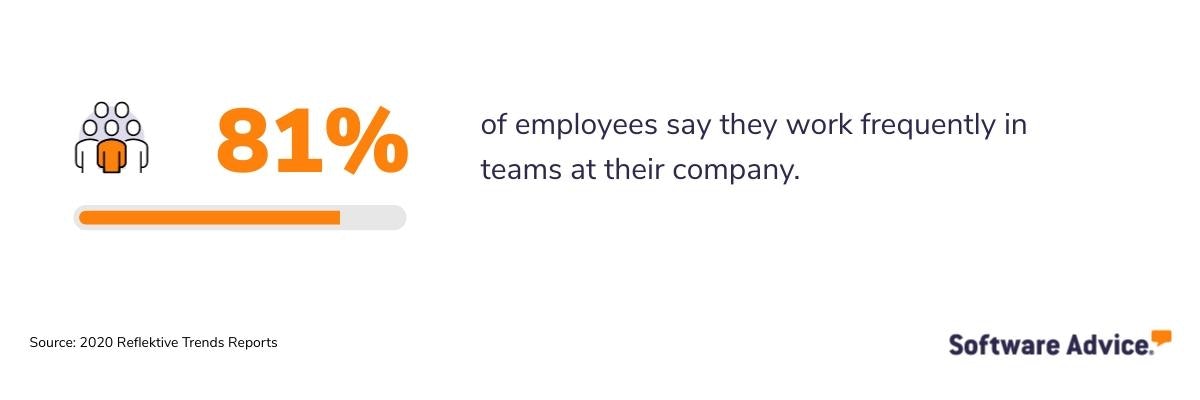
When teamwork is successful, your business experiences a long list of benefits like improved productivity, thought diversity, and innovation, as well as lower rates of burnout and turnover.
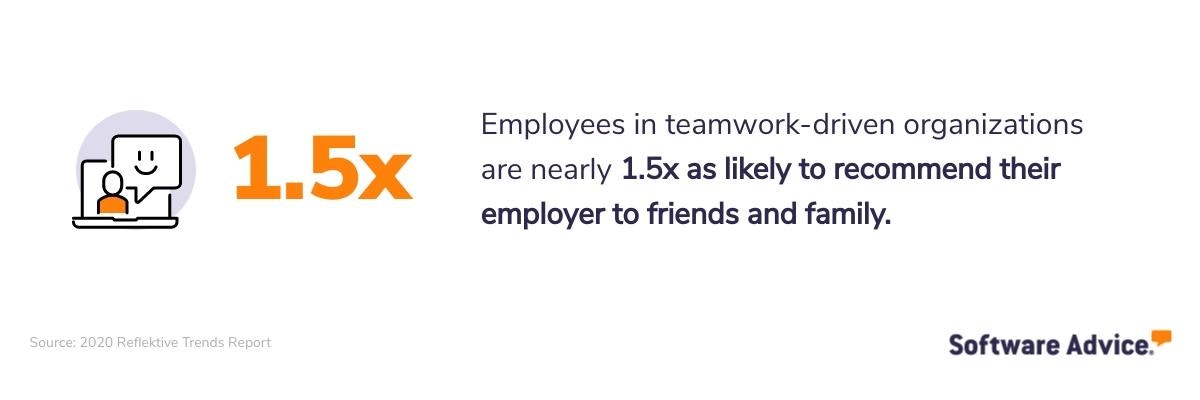
But effective teamwork isn’t just beneficial to a business, it’s a necessity. Failing to work together can lead to disproportionate workloads, groupthink, and miscommunications that escalate into conflicts, all of which are detrimental to a business.
Whether you’re an HR leader interested in building a teamwork-centric company culture or a people manager looking for actionable ways to improve collaboration, we’re here to help, starting with sharing three warning signs that teamwork is ineffective at your organization.
3 warning signs that teamwork is ineffective at your organization
Missed deadlines and unmet goals
If deadlines for projects are constantly being pushed or final deliverables have missed the mark, it’s likely that something is going awry during the collaboration process.
Persistent workplace conflict
Conflict is a normal occurrence in any work environment, but if it feels like your employees are quick to assign blame to one another when expectations aren’t met, that points to a lack of teamwork skills.
High turnover
If the voluntary turnover rate at your organization is abnormally high, dysfunction is occurring on some level, whether it’s due to your company culture or specific business practices.
Improve teamwork with these 4 strategies
If the signs we shared above sound familiar to you, it may be time to take a more active role in supporting teamwork at your business.
1. Embrace the diversity of your workforce
Earlier on we mentioned that a symptom of ineffective teamwork is groupthink. Groupthink occurs when there’s a lack of thought diversity—or at least, those with ideas that oppose the group fail to vocalize them.
In any given team environment, multiple perspectives are needed in order to problem solve and innovate well. In fact, Catalyst reports that companies who establish inclusive business cultures and policies experience up to a 59% increase in creativity, innovation, and openness.
Next steps for embracing the diversity of your workforce:
Empower team members to speak up. Make it clear that everyone’s ideas and feedback are valued within your organization. One easy way to do this is to set up a company suggestion box.
Make an effort to recruit diverse hires. The more diversity your workforce has, the less likely it is that any one individual will feel like they don’t belong. Check out our content, How to Level Up Your Diversity Hiring Practices, for more actionable tips.
2. Build a culture of trust
Trust is a frequently overlooked factor when it comes to teamwork and productivity, but research shows that a lack of trust within a work environment is harmful in more ways than one:
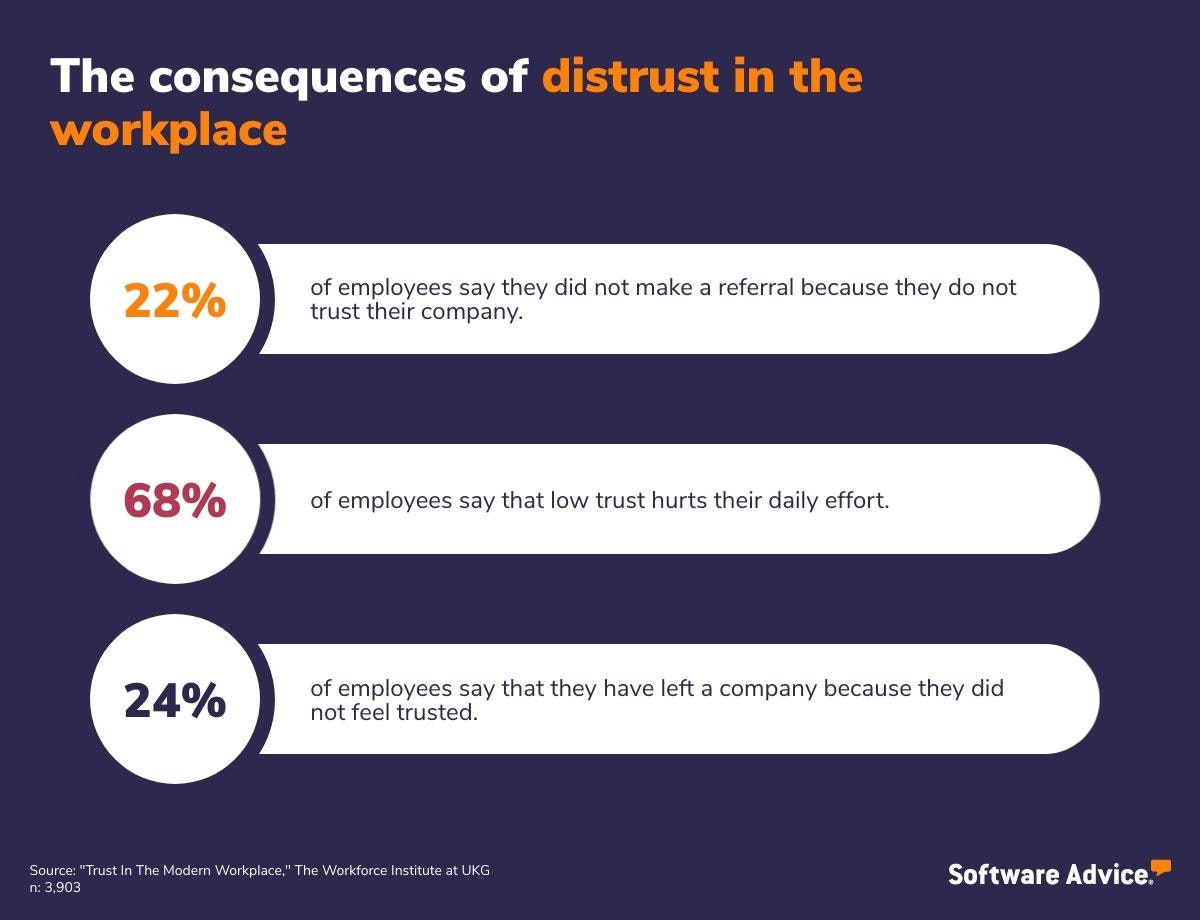
Further, one finding from Gartner revealed that organizations that trust their employees increase their average employee engagement by up to 76%.
These numbers all tell us that building a culture of mutual trust is a worthwhile pursuit, especially when you consider the context of working within a team. Think about it: If employees don’t feel trusted, they’re less likely to put forth their best work, which will lead to suboptimal results from collaborative teamwork.
Next steps for building a culture of trust:
Macromanage your reports. Macromanagement is a management style built on trust where your employees have control and autonomy over their work. With macromanagement, your role as a leader is to provide context and direction that helps your workers prioritize and execute their work.
Focus on what your workers are achieving. How your employees choose to work is less important than the outcomes they drive. When it comes to measuring performance and productivity, focus on the results of your workers’ effort rather than the time or methods they used to achieve their goals.
3. Promote effective communication
It shouldn’t come as a surprise that effective communication skills are the foundation of team collaboration. For example, a study conducted by Project.co late last year revealed that 94% of people feel it’s vitally important that they know the exact status and next deliverable on a project.
However, exchanging information in the era of hybrid and remote work is complicated: In fact, over a third of people (33%) say communication has become more of a challenge in the past 12 months. This means that actively promoting effective communication is more important than ever for teams to collaborate successfully.
Next steps for improving communication between coworkers:
Evaluate the communication channels you use. Project.co’s study revealed that online tools (such as collaboration software) surpassed email as the preferred internal communication channel of choice. This means that if important information is getting buried in your team members’ inboxes, it’s time to consider communicating another way, such as through an internal communication platform or collaboration tool.
Host a workshop on communication styles. Every individual team member has their own communication style. Some may like to chat through details face-to-face or via video conferencing software, while others may prefer to receive updates through email or notifications from a task management platform. A workshop where your employees share their preferences with one another is a great team building exercise that can make collaboration smoother in the future.
4. Stick to small teams for collaborative work
We’re all aware of the old adage, “There are too many cooks in the kitchen.” The sentiment conveyed in that idiom applies to the modern workplace as well—when too many employees are involved in a project, it has a negative impact on the results.
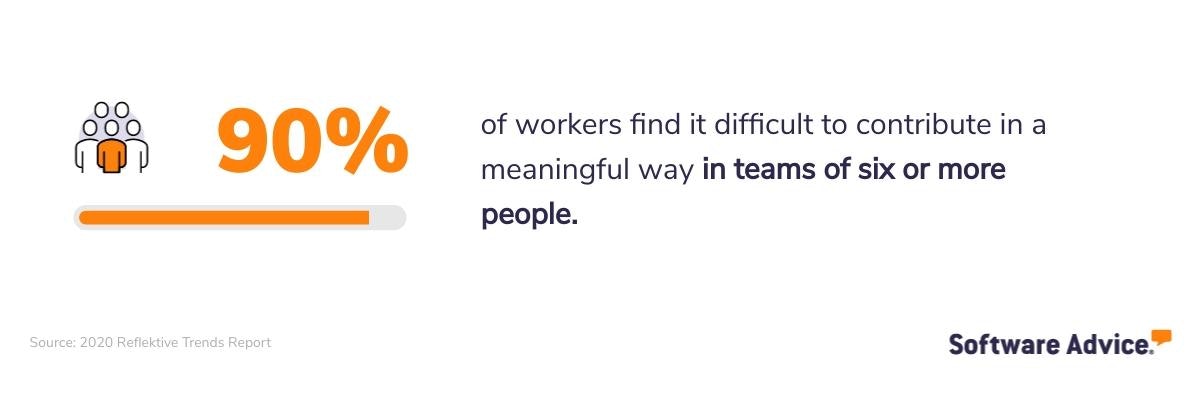
Who you choose and how many people you choose for a project has a direct impact on the results. For example, assigning two employees with similar skill sets to the same project can cause confusion over who should take on what responsibilities—or the two may disagree on how to execute their portion of the project.
Next steps for building focused project teams:
Build project teams based on the required skill sets. At the onsight of a new project, take time to define the desired outcome of the initiative and the skills required to accomplish it. Then, assign workers who have those required skills to the project, aiming for a small group with high skill diversity.
Collect feedback from project participants post-completion. Your employees will have the best perspective on whether their project team was effective or not. Set aside time to debrief with participants after a project is completed, either during one-on-ones or a stand-alone meeting. Use the feedback you’re given to make better decisions when forming project teams in the future.
2 must-have tools that help teams thrive
Having the right tools in place can eliminate pain points in the collaborative process. Below, we’ll give a brief overview of two essential tools that help teams thrive.
1. Collaboration tools
Organizations in any industry can benefit from collaboration software, a type of software tool that facilitates communication, collaboration, and coordination among employees in real time.
Typical features of collaboration software include instant messaging, voice and video calls, and discussion threads, as well as file sharing and document management.
2. Project management software
While there are a wide range of tools within our project management software directory, all of them are designed to help individuals and teams to track the progress of projects, from conception to completion.
Typical features of project management tools include task lists, scheduling, document management, and budgeting, expense, and time tracking.
Time to upgrade your digital workspace? We can help—for free.
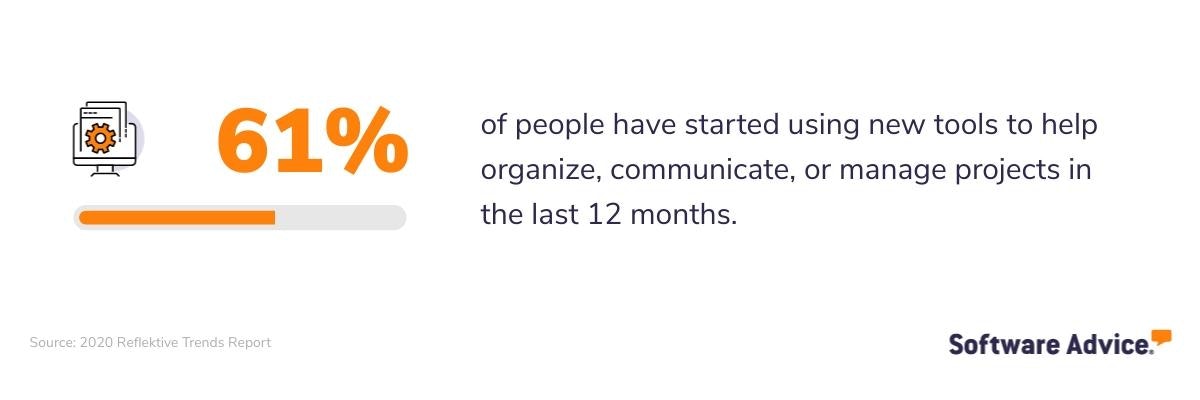
There’s no reason to settle for software that’s not contributing to your team’s success. Whether you’re considering replacing your current collaboration platform or you want to build a new software stack from scratch, we can help.
Through one-on-one conversation and personalized recommendations, Software Advice guides you through your software search. In as little as 15 minutes, our software advisors can help you pick the right software for your business needs, so you can feel confident in your choice. Click here to chat with an advisor or schedule a call.